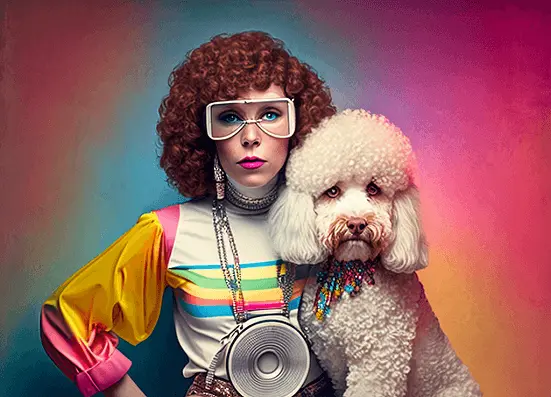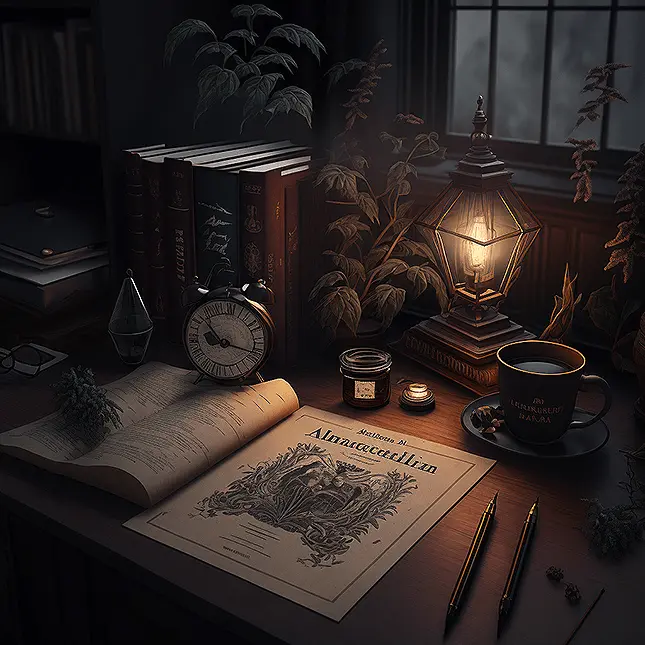Grunge Aesthetic – The Anti-Style
Grunge aesthetic emerged as a response to the excesses of 1980s fashion and culture. A rejection of the polished, high-gloss look that was popular at the time, Grunge celebrated a more raw, unpolished style.
Grunge style also incorporated elements of punk and vintage fashion, which helped to give it a unique, DIY feel. The focus was on creating a look that screamed authenticity and individualism, rather than conforming to mainstream trends.
In the early days of grunge, the style was associated primarily with musicians and artists in the Pacific Northwest region of the United States, particularly in Seattle. Bands like Nirvana, Soundgarden, and Pearl Jam, as well as artists like Kurt Cobain and Courtney Love, helped to popularize the grunge aesthetic in the late 1980s and early 1990s. With the rise of music videos, it wasn’t long before the style caught on with fans across the country and around the world.
One of the key elements of the grunge aesthetic was its use of vintage and thrifted clothing. This made adopting the style affordable and instantly accessible, making it a popular choice for young people who didn’t have a lot of money to spend on fashion. But it was also a deliberate choice on the part of grunge enthusiasts, who were looking for ways to reject mainstream consumer culture. By wearing secondhand clothing, they were able to express their individuality and reject the idea that fashion should be driven by consumerism.
Over time, the grunge aesthetic began to evolve and change. As the style became more popular, it also became more commercialized, with mainstream fashion brands adopting grunge elements and incorporating them into their own designs. This led to some criticism from die-hard grunge fans, who felt that the style had lost its authenticity and rebellious spirit. Nevertheless, grunge style continued to influence fashion and popular culture in the years that followed, and it remains an important part of fashion history to this day.
- March 22, 2023
- Dagmara Mach

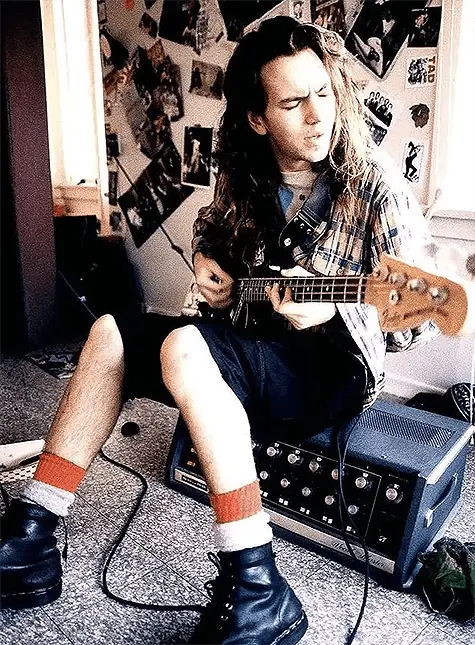
Grunge Fashion
Some key elements of the grunge aesthetic included:
Oversized, layered clothing: Grunge style often involved layering several oversized pieces of clothing, such as flannel shirts, knit sweaters, and oversized cardigans.
Distressed denim: Ripped, torn, and faded jeans were a staple of the grunge look, often paired with oversized t-shirts or flannel shirts.
Vintage and thrifted clothing: Grunge style often incorporated vintage or thrifted pieces, such as old concert t-shirts, vintage dresses, and secondhand leather jackets.
Doc Martens or combat boots: Grunge fashion often featured heavy, practical footwear such as Doc Martens or combat boots.
Minimalist or no-makeup look: Grunge style often involved minimal or no makeup, with a focus on natural or undone beauty.
Dark, muted colors: Grunge style was characterized by a color palette of dark, muted colors such as black, grey, and brown.
The grunge aesthetic was also often associated with a sense of rebellion and anti-establishment sentiment. It rejected the flashy, high-gloss fashion of the 1980s and celebrated a more raw and individualistic style. The grunge look has continued to influence fashion and popular culture in the decades since its emergence.
The DIY aspect of the grunge aesthetic was a key component of its appeal. Grunge style was born out of a rejection of the mainstream fashion industry and a desire to express individuality through fashion choices that were unique, personal, and often created at home. This approach was heavily influenced by punk fashion, which similarly prioritized individual expression and anti-establishment sentiment.
Many of the pieces associated with the grunge aesthetic, such as flannel shirts and oversized knit sweaters, were easy to find at thrift stores or were already part of people’s wardrobes. These pieces were often repurposed, cut up, or layered in unexpected ways to create a new, unique look. The result was a fashion style that was accessible and affordable, yet still expressed individuality and creativity.
The DIY aspect of grunge fashion extended beyond clothing, as well. The grunge aesthetic often included accessories like safety pins, band patches, and homemade jewelry, all of which could be easily made at home. This DIY approach not only allowed for greater creative expression but also aligned with the anti-consumerist values that were a key part of the grunge movement.
In addition to the individualistic and anti-consumerist aspects of DIY grunge fashion, it was also a way for the subculture to reclaim fashion from the mainstream industry. By creating their own clothing and accessories, grunge enthusiasts were able to reject the homogenized and mass-produced fashion of the mainstream and create something unique and personal. This DIY approach allowed grunge enthusiasts to define their own style and reject the industry’s attempts to define it for them.
Overall, the DIY element of the grunge aesthetic was a key part of its appeal and a reflection of the subculture’s anti-establishment sentiment. By rejecting mainstream fashion and creating their own clothing and accessories, grunge enthusiasts were able to express their individuality and creativity in a way that aligned with their values and beliefs.

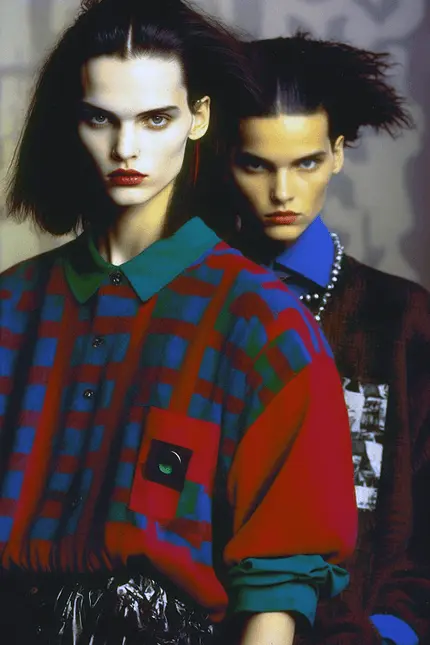

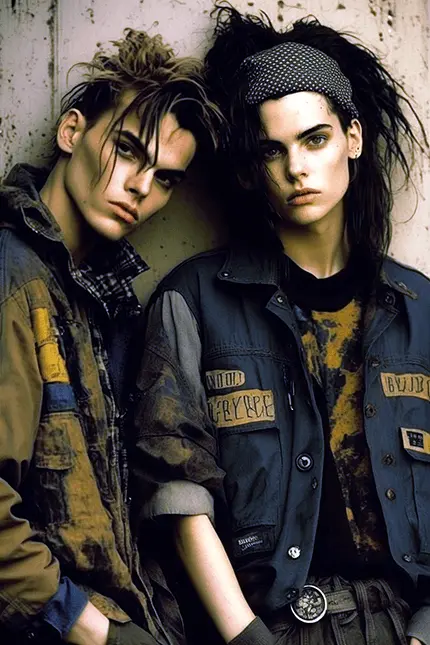
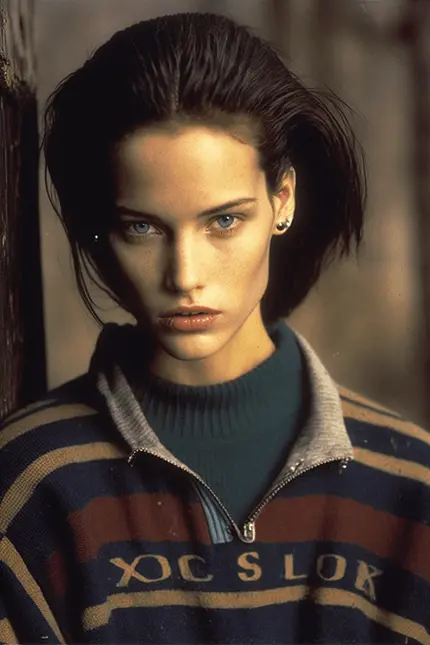
Famous Grunge Fashion Designers
There were a few famous designers who incorporated grunge elements into their collections in the 1990s. Perhaps the most famous was Marc Jacobs, who designed a grunge-inspired collection for Perry Ellis in 1992. The collection was initially met with mixed reviews, as it was seen as a departure from the glamorous, high-fashion aesthetic that Perry Ellis was known for at the time. However, it went on to become an influential moment in fashion history, helping to popularize grunge elements like flannel shirts, Doc Martens, and oversized cardigans in high-end fashion.
Other designers who incorporated grunge elements into their collections in the 1990s included Anna Sui, who drew inspiration from the grunge music scene for her Fall/Winter 1992 collection, and Vivienne Westwood, who mixed grunge elements with her signature punk aesthetic. John Galliano also created a collection for his namesake label in 1993 that incorporated elements of grunge.
It’s worth noting, however, that many designers and fashion insiders at the time were critical of the grunge aesthetic, seeing it as a rejection of the traditional values of high-end fashion. Today, the grunge aesthetic has become an iconic moment in fashion history, with many designers continuing to draw inspiration from its DIY, rebellious spirit.
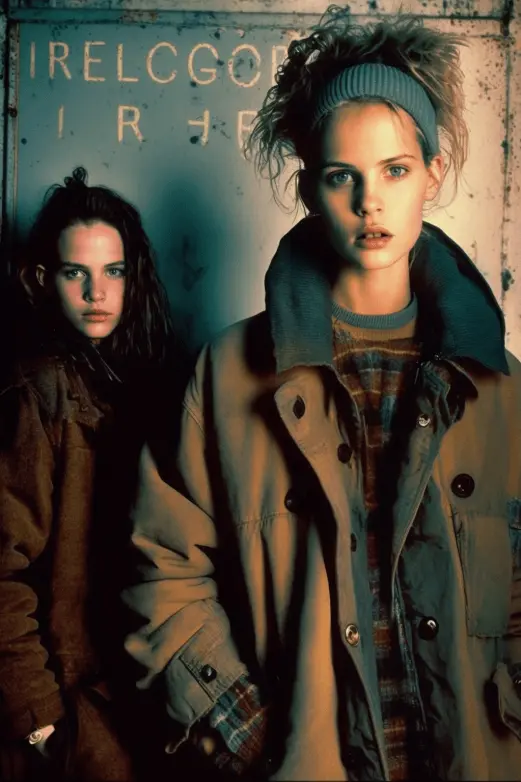
Grunge Interior Design
Grunge interior design of the 90s was heavily influenced by the grunge music movement that originated in Seattle in the mid-1980s. It was characterized by an aesthetic that celebrated the beauty of imperfection and a DIY approach to design.
In terms of color, grunge interior design favored muted tones such as beige, gray, and olive green, which were often paired with darker, moodier colors like black and burgundy. Textures were also an important aspect of the style, with a preference for distressed, worn, or raw materials such as exposed brick, concrete, and reclaimed wood.
Furniture in grunge interior design was often a mix of vintage and industrial pieces, with an emphasis on functionality and comfort over luxury. Oversized and well-worn leather sofas, vintage metal chairs, and industrial light fixtures were all popular choices.
Grunge interior design also incorporated elements of punk rock and grunge music culture. This meant an abundance of posters and artwork, record collections, and DIY accents like handmade rugs and repurposed objects.
Overall, grunge interior design of the 90s was a celebration of individuality, nonconformity, and a DIY ethos that embraced imperfection and authenticity over a polished, mass-produced aesthetic.
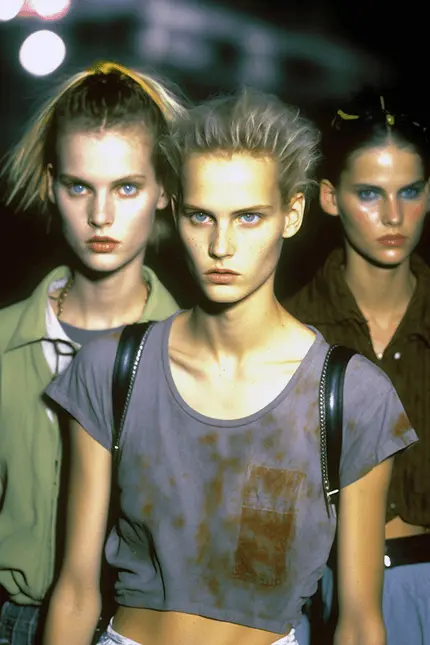
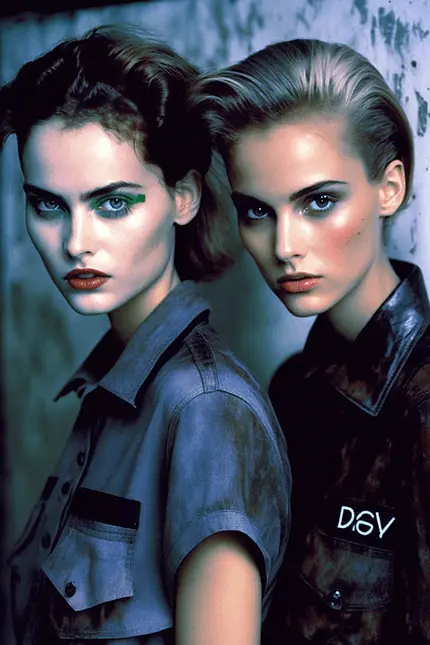
Grunge Bedroom Ideas
90s grunge bedroom design was heavily influenced by the grunge music movement, and it incorporated the same raw, DIY aesthetic that characterized the broader grunge interior design style.
One of the key features of a grunge bedroom was the use of dark, moody colors. Black was a popular choice for walls and furnishings, but other muted tones such as gray, deep green, and burgundy were also commonly used. Textures were also important, with a preference for rough or distressed materials such as exposed brick or concrete.
Furniture in a grunge bedroom was often a mix of vintage and industrial pieces, with an emphasis on comfort and functionality.
Oversized, well-worn leather or fabric sofas, vintage metal or wooden bed frames, and distressed or reclaimed wood nightstands and dressers were all popular choices. Layered bedding with dark colors and plaid patterns were often used to create a cozy and inviting atmosphere.
Grunge bedrooms also incorporated elements of punk and grunge culture, such as posters and artwork from favorite bands, records, and DIY accents. Vintage concert posters or album covers were often hung on walls, and collections of records were prominently displayed.
Lighting was also an important element in grunge bedroom design. Industrial-style fixtures with exposed bulbs or vintage lamps added to the moody atmosphere of the space.
Overall, 90s grunge bedroom design was all about creating a personal, comfortable space that reflected the individuality and nonconformity of the grunge music movement. It was a celebration of authenticity, imperfection, and a DIY ethos that rejected the mainstream, polished aesthetic of the time.
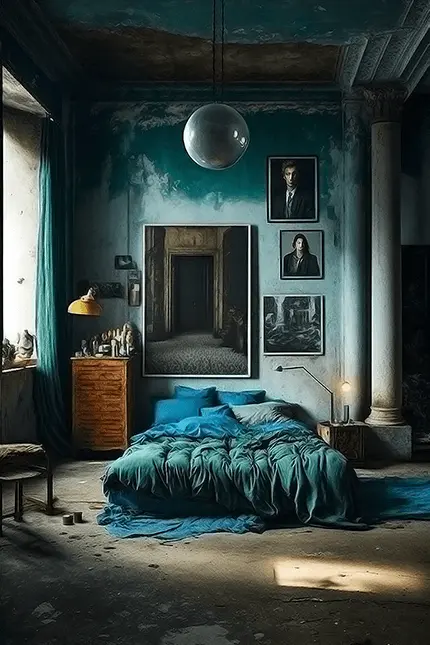
Fashion

Ripped Jeans 101: 1950s Through Today
Ripped jeans, a style of distressed denim with intentional tears and fraying, goes back to Greaser culture of the 1950s. Read More
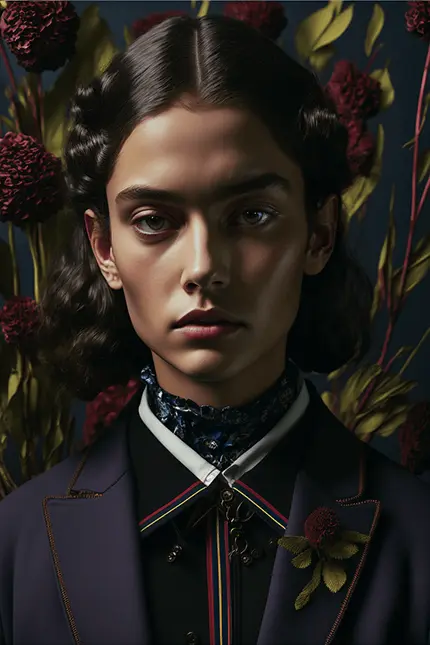
Dark Academia Outfits
Dark academia outfits mix classic, vintage-inspired clothing in darker, muted colors with traditional materials such as wool, and leather. Read More
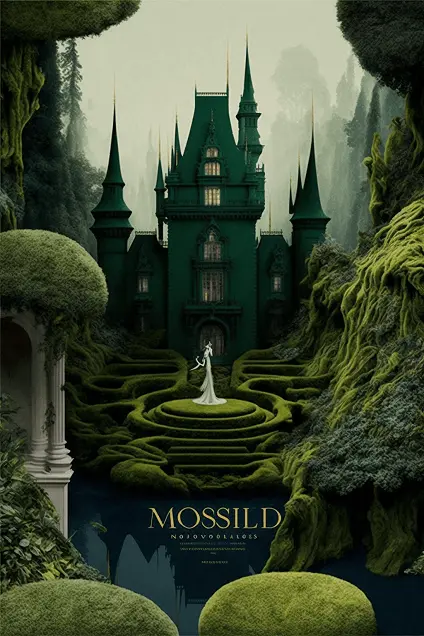
Dark Academia Aesthetic
Dark academia aesthetic embodies gothic classicism, with a preference for dark, neutral tones, and antique objects. Read More
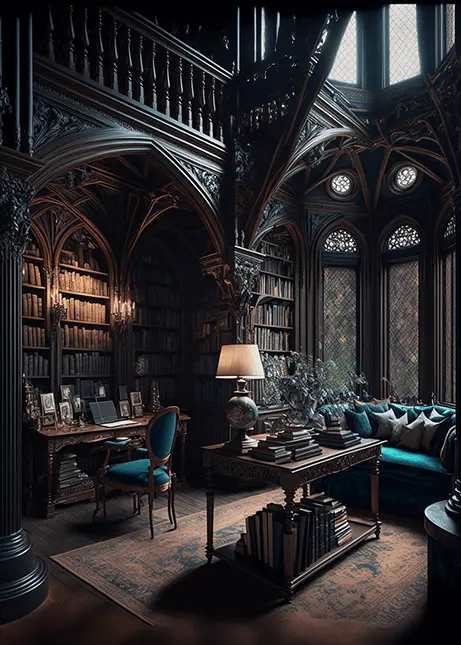
Dark Academia Interior Design
Dark academia interiors combine Gothic and Medieval architecture, literature, and art with a an atmosphere of mystery, elegance, and sophistication. Read More
